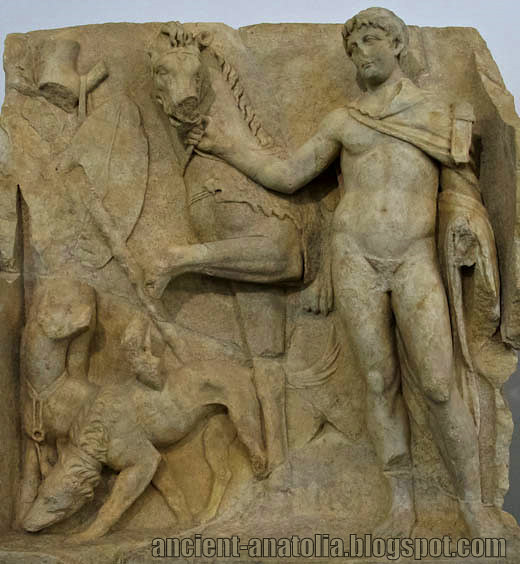
Relief at Sebasteion: Ancient Aphrodisias School of Sculpture...
The diademed youth stands with his horse and two hunting dogs. At the left, an oval (foreign) shield hangs from a leafless tree, against which leans a long thin club. The royal hero is probably a local founder - such as the Assyrian king Ninos, claimed as founder of their city by the Aphrodisians. - Museum of Aphrodisias.